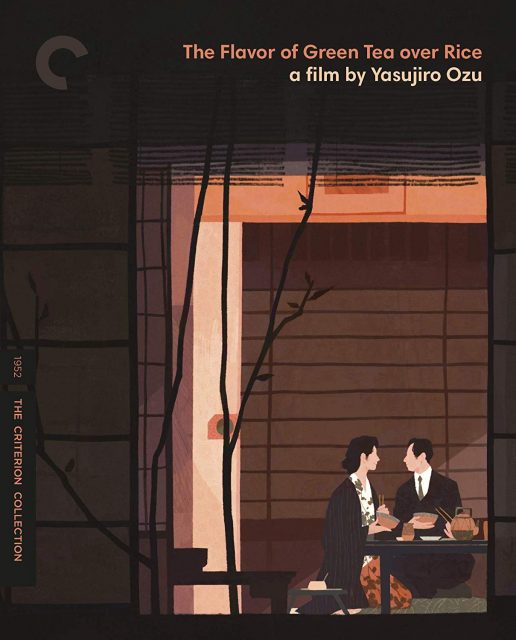Home Video Hovel: The Flavor of Green Tea over Rice, by David Bax

Most of Yasujirô Ozu’s output is a blind spot for me but, from what I have seen, I understand that quiet familial and marital discord is pretty common in his work. And yet it’s a testament to his power as a filmmaker and evidence as to why his films have endured that The Flavor of Green Tea over Rice–which also examines the openness of female friendship compared to the isolation of traditional male social life–feels so specific, real and fresh.
Taeko (Michiyo Kogure) and Mokichi (Shin Saburi) are an unhappily married couple who have been asked to help arrange the marriage of their niece, Setsuko (Keiko Tsushima). Setsuko has no interest in arranged marriage and it’s hard to blame her, given that Taeko and Mokichi are her most prominent examples of the practice’s result. Mokichi spends as much time as possible away from home, at his job or in parlors, while Taeko lies to Mokichi to get out of the house, where she meets with her friends and mocks her husband.
As miserable as everyone is most of the time, The Flavor of Green Tea over Rice never rises to a boil. There’s no shouting and, in fact, much of the conversation is pleasant. Taeko and Mokichi engage in the familiar, casual chitchat that would be familiar to any married couple, happy or not. Ozu is almost anthropological in showcasing the rhythms of quotidian, middle class Japanese life. It’s so unassuming and so easy to slip into that when elegiac moments like the conversation that gives the film its title do bubble up, just as subtly as everything else that happens, the effect is almost overwhelming.
It’s subtle enough that you may almost overlook the troubling gender politics suggested by the fact that Taeko and Mokichi’s reconciliation rests on Taeko’s apology alone, not Mokichi’s. But then a beautiful, wordless final shot of Setsuko and a young man (Koji Tsuruta) suggests that the opposite could just as easily be true of another couple in the future.
Criterion’s new Blu-ray comes from a 4K restoration done in Japan from a fine grain print and the original optical soundtrack. The image is as clean as can be and the lack of contrast likely has more to do with Ozu than with the timing. The audio is mono and is similarly clear.
Special features include a whole other Ozu film, 1937’s What Did the Lady Forget?; a video essay from film scholar David Bordwell; a new documentary directed by David Raim about Ozu’s collaborations with screenwriter Kogo Noda; and an essay by film scholar Junji Yoshida.



























